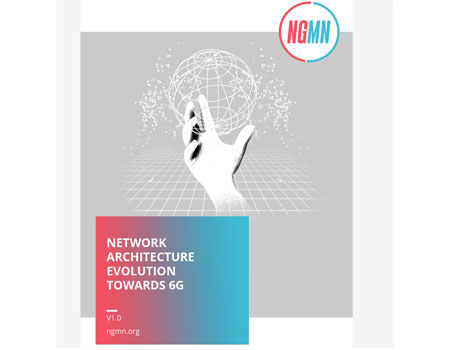By WG SA5, Author Joey Chou, Intel
1 Overview
The explosive growth of mobile or wired broadband networks over the last decade was primarily driven by the deployment of Over the Top (OTT) applications, as shown in Figure 1-1. OTT apps consist of OTT app clients and OTT app servers. The deployment of OTT apps is very scalable, as OTT service providers can deploy OTT app servers in any cloud, and OTT users just need to download the OTT app clients to the devices via wireless or wired Internet.

Figure 1-1: Over the top applications deployment
Edge Computing (EC) enables operator and 3rd party services to be hosted close to the UE's access point of attachment, to achieve an efficient service delivery through the reduced end-to-end latency and load on the transport network [1]. Edge computing services are like OTT that consist of EC clients and EC servers, with the exception that the EC servers need to be deployed closer to the mobile networks where the end-to-end latency requirements between EC clients and EC servers are met.
Figure 1-2 depicts the edge computing networks [2] that contains:
- AC (Application Client) resident in the UE performing the client function. AC connects to EAS through UPF via the N6 interface.
- EAS (Edge Application Server) resident in the EDN, performing the server functions. EAS connects to PCF via the Edge-7 interface.
- EES (Edge Enabler Server), acting as a trusted AF in 5GC, sends information to SMF to influence traffic routing. EES connects to PCF via the Edge-2 interface.
- ECS (Edge Configuration Server) provides EEC (Edge Enabler Client) the information needed for EEC to connect to EES. ECS connects to NEF via the Edge-8 interface.
 Figure 1-2: Edge computing networks
Figure 1-2: Edge computing networks
This paper describes the management aspects of edge computing, including lifecycle management, provisioning, performance assurance and fault supervision that are used to deploy EAS, EES, and ECS and connect them to the mobile networks.
2 Management and orchestration Concept
The management and orchestration of edge computing services is based on the entities involved in edge computing services, as define in annex B in TS 23.558 [2], where Figure 2-1 shows that:
- Application service provider (ASP) is responsible for the creation of EAS and AC.
- Edge computing service provider (ECSP) is responsible for the deployment of edge data networks (EDN) that contain EAS and EES.
- PLMN operator is responsible for the deployment of 5G network functions, such as 5GC and 5G NR.

Figure 2-1: Relationships involved in edge computing service
Figure 2-2 describes the edge computing management framework that contains PLMN management system and ECSP management system. ECSP management system, as the producer, provides management services to enable ASP and ECSP consumers to orchestrate and manage EDN NFs (e.g., EAS, EES, and ECS). PLMN management system, as the producer, provides management services to enable ECSP management system to interconnect EDN NFs with 5GC NFs (e.g., PCF, UPF, NEF). Both ECSP management system and PLMN management system communicate with ETSI NFV MANO to perform lifecycle management functions VNF instances.

Figure 2-2: Edge computing management framework
3 Lifecycle management
3.1 Description
Lifecycle management functions enable ASP or ECSP to deploy EAS, EES, and ECS in edge cloud according to the service deployment requirements, or terminate them when they are no longer needed. Figure 3.1-1 describes how provisioning MnS (Management Service) is used to support lifecycle management. A consumer (e.g., ASP or ECSP), as MnS-C (MnS consumer), invokes provisioning MnS to request ECSP management system, as MnS-P (MnS producer), to perform lifecycle management functions. MnS-P also interacts with ETSI NFV MANO to instantiate or terminate VNF instance(s).

Figure 3.1-1: Lifecycle management via provisioning MnS
3.2 EAS deployment
ASP, as a MnS-C, may request the provisioning MnS-P with the deployment requirements (e.g., the topological or geographical service areas, software image information, QoS, etc.) to deploy the EAS in the EDN. The MnS-P returns a response indicating the operation is in progress to prevent the MnS-C from waiting, as the EAS deployment in the edge cloud may take times. MnS-P analyses the deployment requirements to determine where (i.e., on which EDN) and how many EAS VNF instance(s) should be instantiated. MnS-P then requests the NFVO in ETSI NFV MANO to instantiate the EAS VNF instance(s). The MnS-P sends a notification to MnS-C indicating the result of instantiation (e.g., success, failure) when the deployment is done.
3.3 EAS termination
ASP, as a MnS-C, may request the provisioning MnS-P with the EAS identifier to terminate the EAS in the EDN. MnS-P requests the NFVO in ETSI NFV MANO to terminate the EAS VNF instance, as indicated by the EAS identifier. MnS-P sends a notification to MnS-C indicating the termination is in progress upon receiving a notification from NFVO indicating the start of termination operation. MnS-P sends another notification to MnS-C indicating the result of termination (e.g., success, failure) when the termination is done.
3.4 EES deployment
A ECSP consumer, as a MnS-C, may request provisioning MnS-P with EES deployment requirements (e.g., EES serving area, EDN identifier, EAS identifier, etc.) to deploy the EES in the EDN. MnS-P determines the EDN where the EES(s) are to be instantiated and instantiates the EES VNF instance(s) accordingly. MnS-P then establishes the connection with 5GC network functions (e.g., PCF. NEF). MnS-P notifies MnS-C about the instantiation in-progress. Thereafter, the notification will be sent to indicate the EES instantiation result.
3.5 EES termination
A ECSP consumer, as a MnS-C, may request provisioning MnS-P with EES identifier to terminate one or more EES from the EDN. MnS-P terminates the EES VNF based on the EES identifier and disconnects the EES from the 5GC network functions. MnS-P will notify MnS-C about the termination in-progress. Thereafter, the notification will be sent to indicate that the EES has been terminated successfully.
3.6 ECS deployment
A ECSP consumer, as a MnS-C, may request provisioning MnS-P with ECS deployment requirements (e.g., EDN service area, etc.) to deploy the ECS. MnS-P instantiates the ECS VNF and establish the connection with 5GC network functions. MnS-P then notifies MnS-C about the instantiation in-progress. Thereafter, the notification will be sent to indicate the successful ECS instantiation.
3.7 ECS termination
A ECSP consumer, as a MnS-C, may request provisioning MnS-P with ECS identifier to terminate one or more ECS(s). MnS-P terminates the ECS VNF based on the ECS identifier and disconnects the ECS from the 5GC network functions. MnS-P will notify MnS-C about the termination in-progress. Thereafter, the notification will be sent to indicate that the ECS has been terminated successfully.
4 5GC network function provisioning
4.1 Description
The architecture for enabling edge applications, as described in TS 23.558 [2], requires EDN network functions (i.e., EAS and EES, and ECS) to connect with 5GC networks functions (e.g., UPF, PCF) for routing the UE traffic to the local DN or EAS. Figure 4.1-1 describes how ECSP management system can invoke provisioning MnS to request PLMN management system for connecting EDN network functions (e.g., EAS, EES, ECS) with 5GC network functions (e.g., UPF, PCF, NEF/SCEF).

Figure 4.1-1: Provisioning across multiple management systems
4.2 Provisioning of control plane connection
Provisioning MnS is used to establish control plane connection between EDN and 5GC. Figure 4.2-1 shows an edge computing networks, where user plane traffic is transported to EAS via UPF on the N6 interface, and EES acts as an AF (Application Function) to interact with PCF to perform traffic steering function for routing UE traffic to EAS in the EDN. EDN #1 is trusted by PLMN operators; therefore, EAS #1 and EES #1 are authorized to interfaces to PCF directly in via the N5 reference point (see clause 4.2.3 in TS 23.501 [1]), or via Edge-7 and Edge-2 interfaces (see clause 6.2 in TS 23.558 [2]). EDN #2 is not trusted by PLMN operators; therefore, EAS #2 and EES #2 are not authorized to interfaces to PCF directly, and need to interface to NEF / SCEF via the N33 reference point, or via Edge-7 and Edge-2 interfaces. ECS should be able to connect to NEF / SCEF via the edge-8 interface.

Figure 4.2-1: Edge computing networks with trusted and untrusted AF
The following steps are implemented to enable ECSP management system to obtain the connection information based on service area requirements:
- ECSP management system requests PLMN management system to identify the PCF, NEF, or SCEF to which the EDN NFs need to connect. The request should include the EDN identifier and the service area requirements (i.e., EDN service area, EES service area, and EAS service area (see clause 7.3.3 in TS 23.558 [2])).
- PLMN management system finds and returns the connection information (i.e., the IP addresses and DN of PCF, NEF, SCEF) to ECSP management system, based on the requirements.
The following steps are implemented to connect EDN NFs to 5GC NFs:
- ECSP management system invokes provisioning MnS to request PLMN management system to connect EAS and EES to PCF, based on the connection information mentioned above.
- If EAS and EES are trusted, ECSP management system invokes provisioning MnS to request PLMN management system to connect EAS and EES to PCF.
- If EAS and EES are untrusted, ECSP management system invokes provisioning MnS to request PLMN management system to connect EAS and EES to NEF/SCEF.
- ECSP management system also invokes provisioning MnS to request PLMN management system to connect ECS to NEF/SCEF.
4.3 Provisioning of use plane connection
Provisioning MnS is used to establish user plane connection between EDN and 5GC. It enables ECSP management system to connect a newly deployed EAS to a UPF.
- ECSP management system requests PLMN management system to connect a newly deployed EAS to a UPF with EAS IP address, EAS service area requirements (see clause 7.3.3.6 in TS 23.558 [2])), and list of DNAI and N6 traffic routing requirements ((see Table 8.2.4.1 in TS 23.558 [2])).
- PLMN management system finds a UPF among the UPF(s) being deployed that meets the service area requirements.
- In the case that no UPF can be found, PLMN management system will deploys a new UPF and then configure the SMF to add the UPF to the list of available UPF(s) (see clause 6.3.3.2 in TS 23.501 [11]).
- PLMN management system connects the UPF to the EAS, and return the UPF information (e.g. IP addresses and DN of the UPF) the ECSP management system.
5 Performance assurance
5.1 Description
EDN and 5GC NF performance measurements are needed to evaluate the performance of the end-to end edge computing services. Figure 5-1 shows how the performance assurance MnS is used by ECSP management system to collect EDN NFs (e.g., EAS, EES, and ECS) measurements and 5GC NFs (e.g., PCF, UPF) measurements via PLMN management system.

Figure 5.1-1: Performance assurance for EDN and 5GC NFs
5.2 EAS performance assurance
EAS performance assurance is responsible for collecting the measurements including the EAS KPIs [2], as shown in Table 5.2-1 below, to enable ASP to monitor the EAS performance.
Table 5.2-1: Edge Application Server Service KPIs

ASP first subscribes to receive the notification of EAS measurement data collection, then invokes the performance assurance MnS to request the ECSP management system to collect EAS KPIs and measurements. The MnS-P at ECSP management system will report the measurements to ASP when the measurements data are available.
5.3 ECS performance assurance
ECS performance assurance is responsible for collecting measurements needed to monitor the performance of ECS that provides various functionalities as defined for clause 6.3.4 in TS 23.558 [2].
A consumer first subscribes to receive the notification of ECS measurement data collection, then invokes the performance assurance MnS to request ECSP Management system to collect ECS KPIs and measurements. The MnS-P at ECSP management system will report the measurements to the consumer when the measurements data are available.
5.4 EES performance assurance
EES performance assurance is responsible for collecting measurements needed to monitor the performance of EES that provides various functionalities as defined for clause 6.3.2 in TS 23.558 [2].
A consumer first subscribes to receive the notification of EES measurement data collection, then invokes the performance assurance MnS to request ECSP Management system to collect EES KPIs and measurements. The MnS-P at ECSP management system will report the measurements to the consumer when the measurements data are available.
5.5 5GC NF measurements to evaluate EAS performance
ECSP management system to collect the measurements of 5GC NFs (e.g. UPF, PCF, …) that are needed to evaluate the EAS performance. For example, the ECSP management system can correlate the 5GC NF and EAS measurements to determine the root cause of poor EAS performance.
ECSP management system invokes performance assurance MnS to request the PLMN management system to collect 5GC NF measurements that are related to EAS performance. The performance assurance MnS producer at PLMN management system will select specific measurements to be report the measurements to the consumer, as PLMN operator may not want to expose certain measurements (e.g., measurements for 5GC NF(s) not relevant to EAS) to 3rd party operators.
6 Fault supervision
6.1 Description
The end-to end edge computing services can be impacted by alarms in 5GC and EDN NFs. ECSP management system and PLMN management system need to be able to detect alarms from each other to find the root cause of issues impacting the end-to-end edge computing services that are provided by EDN and 5GC.
6.2 Detection of 5GC NF alarms by ECSP management system
Figure 6-1 shows how the fault supervision MnS can be used by ECSP management system to receive alarms from PLMN management system.

Figure 6.2-1: Detection of 5GC NF alarms by ECSP management system
ECSP management system first subscribes to receive 5GC NFs (e.g., UPF, PCF, NEF, SCEF, …) alarms that may impact the EDN NFs (e.g., EAS, EES) performance from PLMN management system. Upon receiving the alarm notification, ECSP management system can correlate the 5GC NF alarms to determine the root causes for poor EDN NF performance. ECSP management system subscribes to receive 5GC NF alarms from PLMN management system. PLMN management system sends the NF alarm notification to ECSP management system when it detects 5GC NF alarms.
6.3 Detection of EDN NF alarms by PLMN management system
Figure 6-2 shows how the fault supervision MnS can be used by PLMN management system to receive alarms from ECSP management system.

Figure 6.3-1: Detection of EDN NF alarms by PLMN management system
PLMN management system first subscribes to receive EDN NFs (e.g., EAS, EES, ECS) alarms that may generate issues in 5GC NFs (e.g., UPF, PCF, NEF, SCEF, …) that are supporting EDN from ECSP management system. Upon receiving the alarm notification, PLMN management system can correlate the EDN NF alarms to determine the root causes for 5GC NF issues. PLMN management system subscribes to receive EDN NF alarms from ECSP management system. ECSP management system sends the NF alarm notification to PLMN management system when it detects EDN NF alarms.
7 References
See also: 3GPP TS 28.541: "Management and orchestration; 5G Network Resource Model (NRM); Stage 2 and stage 3".


 Technology
Technology




